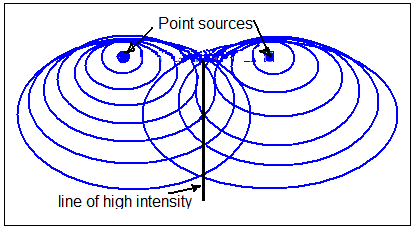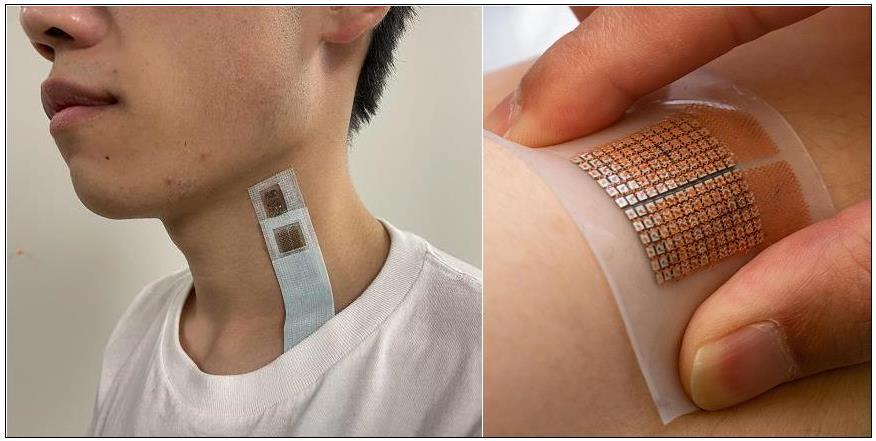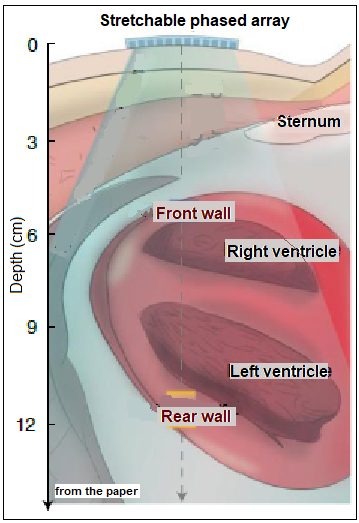Listening to echoes to discover what it’s like down there, says S.Ananthanarayanan.
The organs of the body, which a doctor treats, treats are invisible – till not so long ago, diagnoses were based only on signs that could be made out on the surface. But now, the doctor has lab reports, x ray pictures and scan reports to help her.
The x ray was the first probe that provided physicians a picture, without the need for surgery, of the state of tissues within the body. X rays are a form of light, but of short wavelength, which enables them to pass through soft tissue. Many decades later, sound waves, which were used to detect flaws in things made of metal, found an application in medicine. The wavelength, again, was shorter than of audible sound, to be of dimensions close to those of the things to be imaged.
And then entered electronics and computers. The CT-scan was a series of X ray pictures that were taken in slices through parts of the body and put together to create 3-D images. And ultrasound scans, with a probe that directed ultrasound into the body and displayed images on a computer screen, with the facility for measurements and recording the images – this was the Ultrasound-Sono-Graph (USG). Further tools that became available were MRI, which scanned the response of substances in cells to wireless radiation and strong magnetic fields, and PET, which works with radioactive tracers.
These advances have extended the range of information that medical persons have to diagnose, plan treatment and monitor results. The drawback, however, is that the the scans need large pieces of equipment, they take some time, and they are expensive. A paper in the journal, Nature, Biomedical Engineering, now reports a development in stark contrast – a wearable skin patch, just a few centimetres across, which uses sound waves to provide good quality, real time images of internal organs, and for as long that the wearer carries the patch. Chonghe Wang, Baiyan Qi, Muyang Lin, Zhuorui Zhang, Mitsutoshi Makihata, Boyu Liu, Sai Zhou, Yi-hsi Huang, Hongjie Hu, Yue Gu, Yimu Chen , Yusheng Lei , Taeyoon Lee, Shu Chien, Kyung-In Jang, Erik B. Kistler and Sheng Xu , from the University of California, San Diego, Harvard University, Yonsei University, Korea Institute of Science and Technology, Seoul, Daegu Dyeongbuk Institute of Science and Technology, Daegu, Republic of Korea, describe a prototype of the skin patch, which can focus upon and monitor the dynamics of blood flow from as deep as 14 centimetres inside the body.
“Most chronic diseases directly manifest on one or more deep tissues. Thus, continuous and non-invasive monitoring of physiological signals in deep tissues to interrogate disease initiation and progression is paramount to support clinical decisions for diagnosing and treating chronic diseases,” the paper says. Now, what this calls for is something which can penetrate the tissue surrounding the organ of interest and carry back useful information, and to do it without being cumbersome.
Advances in communications and electronics has created possibilities of miniaturisation and portability. The information from a hand-held USG probe can connect to a cell phone, dispensing with the need of larger equipment, or permit the scan to be performed over a telecom link. The drawback, however, is that it cannot be continuous and without the role of a technician.
The answer, the paper says, appeared to lie in stretchable electronics, - devices that could be attached to a patient’s body, monitoring her medical condition continuously, while she went about her work, and not only at a specialised clinic. The devices would include electronic circuits to drive generators and detectors of different kinds of waves, devices to convert the reflection into electrical records, arrangements to record and transmit the information, the power supply, etc. The devices need to be embedded in a flexible substrate, like silicone or polyurethane. And the interconnections to have the slack that allows the substrate to bend, or to use conductors that are stretchable. These conditions have been approximated, but optical or other electromagnetic waves, even chemical or heat signals, in the probe, do not have the ability, either to reach the target organs, or, if this were possible, to usefully resolve an image, the paper says.
High frequency sound waves, however, do have the capacity to penetrate human tissue and with electronics, we can arrange for a panel of sources, which create a focussed and directed beam of sound waves to select tissue masses of interest. A single source of waves would spread out, like the ripples on a pond and grow rapidly weaker. If there were a pair of sources, however, there would be a plane, between the sources, where the waves would add, and become stronger. And with more sources, the region where the waves from all the sources add could be arranged to be a narrow beam, or a small volume, and the waves in this region would be powerful. With the control of the timing, from the different sources, called the phased array technique, this region of concentrated waves could be moved and adjusted.

“An unfocused single element has a penetration depth of 3–4 cm and can sense a region directly beneath it. Considering the complexity of human anatomy, it is very challenging to target specific regions with a single element. The phased-array technique, which synchronizes an array of transducers to enhance the energy density and enable beam steering, is ideal for overcoming this challenge,” the paper says.
The team has hence developed a panel of 12 millimetre-size ultrasound generators, a number that can be increased to 128, embedded in a flexible, polymer medium. The interconnections are with ‘serpentine’ wires, so that the device can be bent or stretched. And each device is separately controlled by a computer, which, conceivably, could be in a microchip, embedded in the device.
The flexible strip contaiing the device could be attached to the body, say the chest or the neck, and it would follow the contours of the body if the wearer stretches or bends. As ultrasound is absorbed by air, it is important to avoid air gaps between the source and the skin of the wearer. This is the reason for the special gel when the hand-held device is used to probe the body for the usual USG scan. With the flexible strip, however, close contact with body contours eliminates the need for the gel, and the strip can be in place for extended periods.

“The device allows for active focusing and steering of ultrasound beams over a range of incident angles so as to target regions of interest,” the paper says. For the best convergence of the ultrasound beam, the wavelength needs to be near the spacing of the elements in the phased array. And then, a longer wavelength is good for deep penetration, but not good for image resolution. The authors hence selected a wavelength that best satisfied the conflicting requirements.

In a proof of concept, the authors probe the left and right ventricles of the human heart and record the blood flow, by measuring the Doppler effect- the effect that the movement of the blood has on the frequency of the reflected sound waves. “The ultrasonic beam could be steered to intercept blood flow at an appropriate Doppler angle, allowing accurate recordings of blood flow spectra in major arteries and veins. Combining the blood flow and vessel dimension measurements, we were able to estimate cerebral blood flow in real time.” they say.
The device could be coupled with an intelligent unit the wearer could carry, a devise that would record relevant body parameters over hours or days, could communicate with the medical team and even raise alarm when specific features are seen.
------------------------------------------------------------------------------------------ Do respond to : response@simplescience.in-------------------------------------------